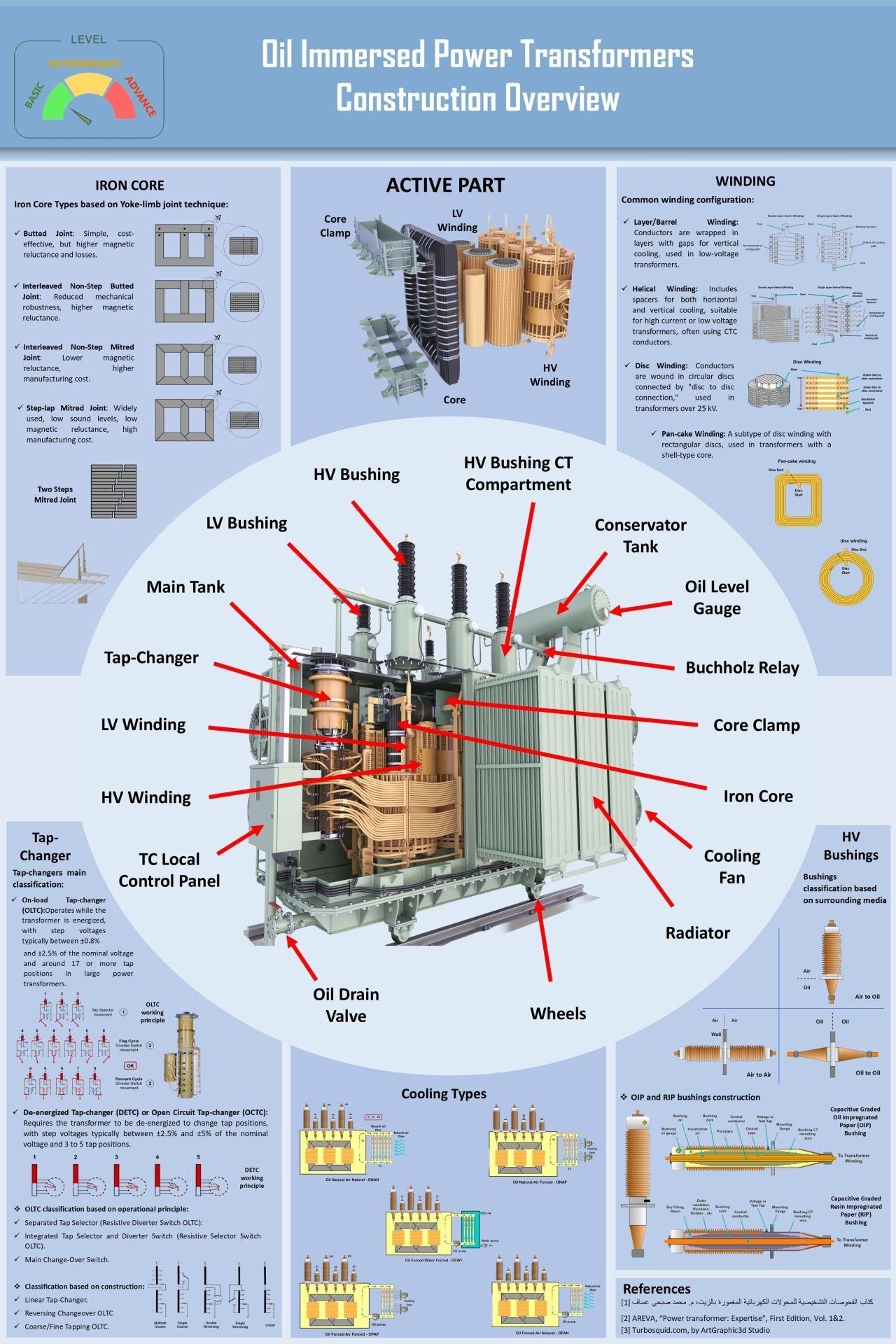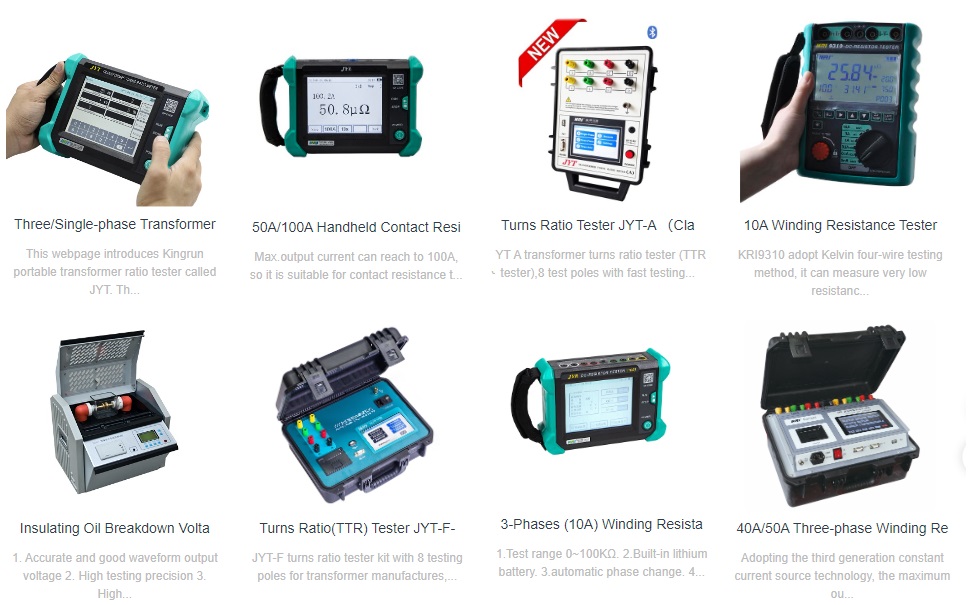The core section introduces different jointing techniques, such as butt joints, interleaved butt joints, and mitred joints, each with varying magnetic resistance and manufacturing costs.
The winding section explains common configurations, including layer winding, helical winding, and disc winding, which are suitable for different types of transformers.
The main diagram clearly labels the essential transformer components, including high-voltage and low-voltage windings, bushings, the main tank, radiator, cooling fan, oil level gauge, tap changer, and the local control panel, helping to understand the internal structure of the transformer.
The tap changer section classifies on-load and off-load tap changers and explains their working principles, while the cooling section illustrates different cooling methods, such as ONAN and OFAF.
Finally, the bushing section analyzes the structure and classification of OIP and RIP bushings.
This diagram offers clear visual information, making it easier for engineers, technicians, and students to quickly understand the transformer’s components and operating principles. It is also useful for equipment maintenance, training, and technical discussions.

Kingrun Transformer Instrument Co.,Ltd.


More Transformer Testers from Kingrun
